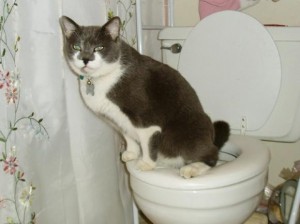Reasons Why You Should Never Get rid of Animal Waste Down the Toilet
Reasons Why You Should Never Get rid of Animal Waste Down the Toilet
Blog Article
The author is making a number of great points regarding Should you flush animal waste down the toilet as a whole in this content down below.

When it involves taking care of waste, especially animal waste, lots of people frequently consider the hassle-free alternative of flushing it down the toilet. Nonetheless, this seemingly simple solution can have severe effects for the environment and public health. In this article, we'll check out why flushing animal waste down the toilet is a negative concept and supply different methods for proper disposal.
Introduction
Appropriate waste disposal is vital for maintaining environmental sustainability and public health. While it may appear safe to purge animal waste down the toilet, it can cause various issues, both for the environment and human well-being.
Dangers of flushing pet waste
Ecological influence
Flushing animal waste presents damaging microorganisms and pathogens right into waterways, which can adversely impact water ecological communities. These pathogens can contaminate water resources and harm aquatic life, interrupting fragile ecological communities.
Public health concerns
Pet waste has unsafe germs such as E. coli and Salmonella, which can position serious wellness dangers to human beings. Flushing pet waste down the toilet can contaminate water products, resulting in the spread of conditions and infections.
Alternatives to flushing
Instead of flushing pet waste down the toilet, there are several alternative disposal techniques that are a lot more eco-friendly and sanitary.
Composting
Composting animal waste is a green method to throw away it. By composting, raw material is broken down into nutrient-rich soil, which can be used to feed yards and plants.
Garbage dump disposal
Throwing away animal waste in a garbage dump is one more option. While not as environmentally friendly as composting, it is a more secure choice to flushing, as it stops the contamination of water resources.
Pet dog waste disposal systems
There are specific family pet waste disposal systems available that safely and hygienically dispose of pet waste. These systems commonly make use of enzymes to break down waste and eliminate smells.
Steps to proper animal garbage disposal
To make sure correct disposal of pet waste, adhere to these steps:
Scooping and getting waste
Regularly scoop and bag animal waste utilizing naturally degradable bags. This stops waste from contaminating the atmosphere.
Making use of assigned waste bins
Dispose of bagged pet waste in designated waste bins, such as compost bins or garbage dump bins. Avoid flushing it down the toilet at all costs.
Cleansing can and pet locations routinely
Consistently clean litter boxes and pet dog locations to avoid the accumulation of waste and bacteria. Usage pet-safe cleaning items to preserve health.
Benefits of proper disposal approaches
Embracing proper disposal methods for pet waste uses numerous benefits:
Decreased environmental pollution
Appropriate disposal approaches reduce the threat of environmental pollution, securing rivers and communities from contamination
Minimized risk of water contamination.
By staying clear of flushing animal waste down the commode, the threat of water contamination is considerably decreased, securing public health.
Boosted sanitation and hygiene
Correct disposal methods promote much better sanitation and hygiene, producing a more secure setting for both humans and pets.
Verdict
Finally, purging pet waste down the toilet is damaging to the environment and public health. By adopting alternate disposal methods and adhering to correct waste monitoring techniques, we can decrease the unfavorable influence of animal waste and contribute to a cleaner, healthier world.
What To Do With Dog Poo – The Do's And Don'ts Of Disposing Of Faeces
Dog poo bins
Some councils provide dedicated dog waste bins in popular dog-walking areas that can take dog poo that has been bagged but you can legally dispose of dog waste in any public litter bin, as long as it is securely bagged. This also applies to your wheelie bin at home.
Do not flush
Water companies do not recommend flushing dog faeces down the toilet because certain parasites can survive the water processing treatment and are potentially harmful to humans. You should also never consider flushing dog poo that has been bagged down the toilet as the bags will not break down and instead create severe blockages in the sewage system.
In the woods
The Forestry Commission promotes a ‘stick and flick’ method for dealing with waste in the woods. This means finding a stick and using it to flick any poo from off the path so that it is out of the way of other walkers. You could also bury it as long as it is not in an area where there might be livestock.
Livestock
Parasites found in dog poo can be transmitted to livestock if they inadvertently eat infected faeces that has been left on grazing land. This could result in the death of sheep or abortion in cattle so you should always make sure you pick up your dog’s waste in fields where livestock could be present.

I discovered that entry about Don't Flush Your Pets Poo Down The Loo, Vet Warns when perusing the web. Sharing is caring. Helping others is fun. I treasure your readership.
Call Us Today Report this page